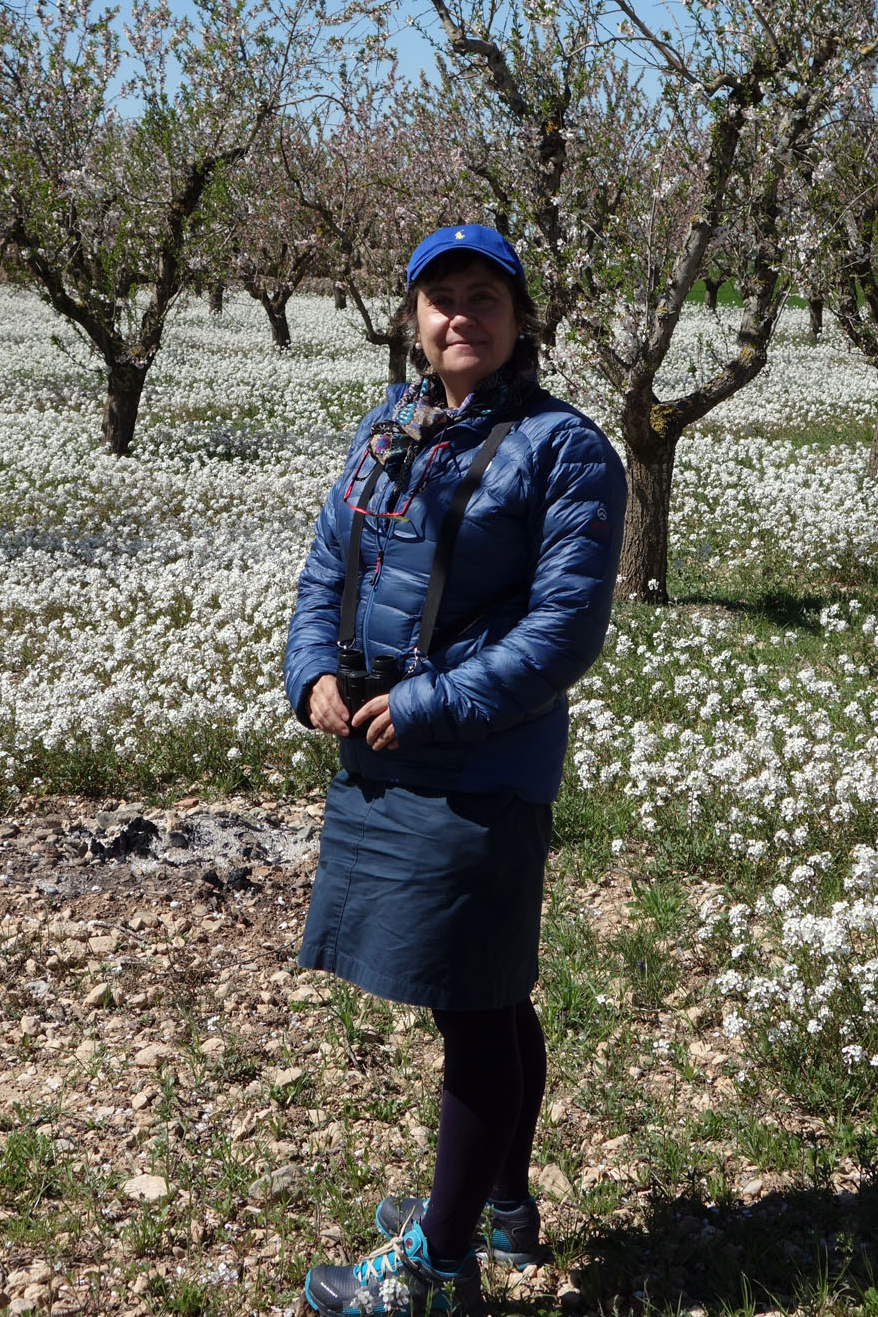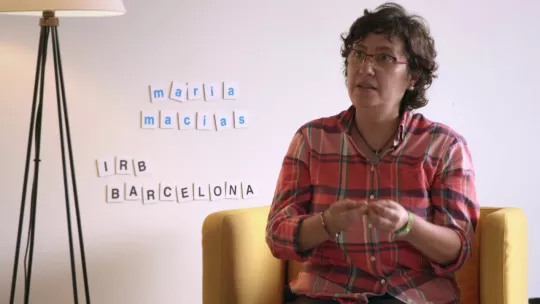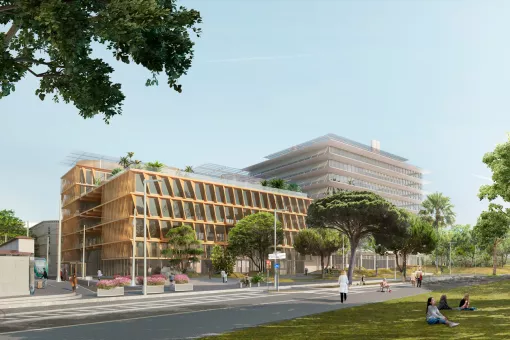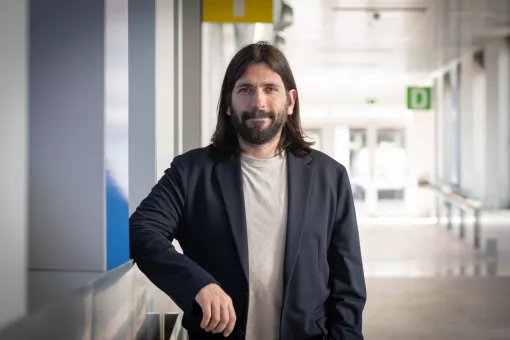Images
The third video of IRB Barcelona’s series “Meet Our Scientists” is devoted to ICREA researcher Maria Macias, who describes her field as “exciting and understandable”.
Her research focuses on determining protein structures that have the potential to improve drug development
Maria Macias, head of the Structural characterization of macromolecular assemblies group at the Institute for Research in Biomedicine (IRB Barcelona), talks about her particular Puzzle of Life in the third video of “Meet Our Scientists”—an audio-visual initiative that seeks to raise awareness of the talent, passion, insight and character of the scientists performing research at the centre and to disseminate biomedicine.
Maria Macias (Zamora, 1964) joined IRB Barcelona through an ICREA contract in 2002. She had previously worked at the European Molecular Biology Laboratory (EMBL) in Germany, where she specialised in structural biology. The researcher compares her work with that of watchmakers: “We like to study the shape and details of proteins to illustrate how they work.” “Also, by revealing the many structural details of systems, we can contribute to the design of more efficient drugs that have fewer side effects,” says the scientist.
One of her research lines addresses Smad proteins. This line is developed together with Joan Massagué, director of the Institute Sloan Kettering in New York. They study the behaviour of these proteins, which are “crucial” for all animal life forms. “We seek to unveil new information about the function of these proteins and also to explain how mutations detected in tumours affect their folding.” In spite of increasing knowledge of the many key processes of life, we still have to define the keys that determine the correct function of organisms and the vulnerable points that favour the development of diseases.

Macias describes structural biology as a discipline that “although based on physics equations and the use of technologies and sophisticated experiments is exciting and understandable.” This science combines molecular biology, chemistry and genome sequence analysis with techniques that require large infrastructures, such as nuclear magnetic resonance, X-rays and electron microscopy. “Current-day science needs to apply many tools to be able to continue generating knowledge and to bring us closer to answering the questions raised by society.” She adds, “Of course, none of this is any use without the people in the team, who bring ideas to life.”
The researcher considers that being a scientist “is a way of being and enjoying every day as if it were the first”. In the video she shows us some binoculars, revealing her passion for nature and bird watching. “When you are walking through the countryside or through marsh land, you never know what you are going to come across. Things are unpredictable and exciting…just like when you reach the lab every morning.”
About IRB Barcelona
The Institute for Research in Biomedicine (IRB Barcelona) pursues a society free of disease. To this end, it conducts multidisciplinary research of excellence to cure cancer and other diseases linked to ageing. It establishes technology transfer agreements with the pharmaceutical industry and major hospitals to bring research results closer to society, and organises a range of science outreach activities to engage the public in an open dialogue. IRB Barcelona is an international centre that hosts 400 researchers and more than 30 nationalities. Recognised as a Severo Ochoa Centre of Excellence since 2011, IRB Barcelona is a CERCA centre and member of the Barcelona Institute of Science and Technology (BIST).






